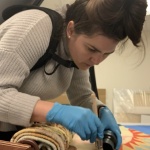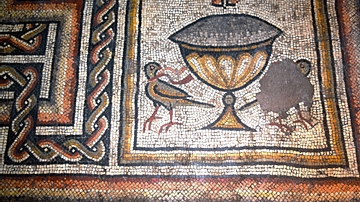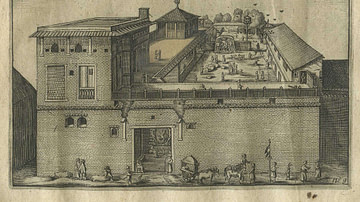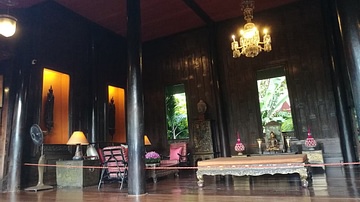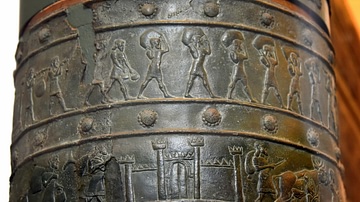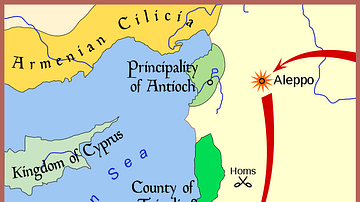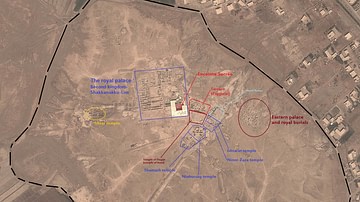Illustration
Floor mosaic with allegorical representation of Life and Easy Living. Crafted from limestone and glass tesserae, this mosaic was excavated in Syria and dates to approximately 350-400 CE.
In the mosaic, an affluent couple is shown engaged in relaxed conversation on an elegant couch. The allegorical meaning is described through the Greek inscription tryphe - bios, which identifies the female figure as Tryphe, meaning soft and leisurely living. The male figure is Bios, meaning Life. The allegory is meant to imply that life should be accompanied by pleasurable living.
The man is shown holding a magic wheel in his right hand, a charm used to keep lovers together. Its presence emphasizes the idea that Life and Easy Living should be inseparable.
The mosaic is currently housed in the Royal Ontario Museum in Toronto, Canada.
About the Author
Cite This Work
APA Style
Murray, D. (2015, August 31). Life and Easy Living. World History Encyclopedia. Retrieved from https://www.worldhistory.org/image/4041/life-and-easy-living/
Chicago Style
Murray, Dana. "Life and Easy Living." World History Encyclopedia. Last modified August 31, 2015. https://www.worldhistory.org/image/4041/life-and-easy-living/.
MLA Style
Murray, Dana. "Life and Easy Living." World History Encyclopedia. World History Encyclopedia, 31 Aug 2015, https://www.worldhistory.org/image/4041/life-and-easy-living/. Web. 17 Apr 2025.


